In case of no acceptance, you can also ask for your personal data to be removed from our database sending the request to openinnovability-support@enel.com.
Remote vegetation pruning system to improve safety and efficiency
Published on Monday, July 28 2025
Login or Sign up
Challenge Expiration Date: September 12, 2025
Reward:
Collaboration opportunity with Enel + 10.000$
Abstract
Subtitle.
ENEL is seeking solutions to execute vegetation pruning, remote grounding operated or automated, keeping the operator out of the zone of hazard, reducing the need for physical intervention, improving both safety and operational efficiency.
Abstract.
As a global Distribution System Operator (DSO), Enel Grids oversees more than 1.9 million kilometers of electricity distribution lines, many of which run through areas with dense or fast-growing vegetation. These environments pose significant operational challenges, particularly in terms of safety and service continuity. Vegetation encroachment is a leading cause of outages, asset damage, and even wildfire risks that are exacerbated by increasingly frequent extreme weather events.
Recent experiences have highlighted opportunities to improve traditional vegetation management practices. Manual cutting and inspection activities can involve working in challenging conditions—such as elevated areas or proximity to electrical infrastructure — which present safety considerations. In a modern, safety-first operational model, there is a growing focus on minimizing these exposures through innovative and more efficient approaches.
In this context, Enel Grids has set the goal of transforming vegetation management by introducing innovative and safety-centric tools. The objective is twofold:
- Eliminate or drastically reduce direct human exposure to high-risk environments;
- Enhance operational efficiency and precision through the use of advanced technologies.
These innovations are part of a broader strategy to embed safety into every layer of grid management. By leveraging digitalization and automation, Enel Grids not only improves service reliability but also ensures that the health and safety of its workforce remain a top priority.
This initiative aligns with Enel’s strategic investment plan for 2025–2027, which dedicates €26 billion to strengthening the grid through sustainability, resilience, and digital transformation.
THE CHALLENGE IS RESERVED TO ALL THE LEGAL ENTITIES WHICH ARE NOT PART OF THE ENEL GROUP.
Make sure you register at openinnovability.com as an Organization.
Can you help Enel Grids by providing this solution?
WORKSHOP
SAVE THE DATE! Join us for a workshop dedicated to this challenge that will take place on August 27, 2025 [DOWNLOAD THE WORKSHOP CALENDAR].
You will have the chance to hear from the Challenge Owner about the challenge details and to ask to the Enel Grids team questions: don’t miss this opportunity to perfect your solution and meet the solution requirements.
This challenge provides contribution to the following sustainable development goals (SDGs) for transforming our world:
· SDG 3: Good Health and well-being
· SDG 8: Decent Work and Economic Growth
· SDG 9: Industry, Innovation and Infrastructure
· SDG 11: Sustainable cities and communities
Description
THE CURRENT SITUATION
Currently, vegetation cutting near power lines is largely performed manually, using tools that only partially automate the process. These activities often require direct human presence, including work at height or near live electrical components, which can pose safety risks.
The goal of this challenge is to identify remote solutions with operator on the ground or completely automated solution that reduce the need for physical intervention, improving both safety and operational efficiency. By rethinking traditional methods and leveraging innovative tools, Enel Grids aims to create a safer working environment for field personnel while ensuring reliable vegetation management in compliance with local regulations.
THE CHALLENGE SOLUTION’S REQUIRED FEATURES AND DETAILS
Enel Grids is looking for innovative solutions to improve the safety and efficiency of vegetation management near power lines.
The goal is to identify a remote-operated or semi-automated cutting system that allows operators to work from ground with a safe distance, reducing physical exposure while ensuring precise, effective pruning. The solution should be suitable for both routine maintenance and emergency interventions, and adaptable to different environments and regulatory contexts.
Some innovative tools have already been introduced that help reduce safety risks and improve efficiency. In particular, field operators are currently using a manual controlled electric chainsaw (called “motopoda”) connected to an insulated hot stick and used from the ground for pruning close to both MV and LV lines. In order to guarantee stability, a tripod is used to balance the system weight and avoid that the operator works within the falling zone.
Since this solution has some limitations in its use due to manual handling, ergonomics, weight, branch diameter limitation, lack of remote control and branch handling control. Enel Grids is seeking a solution for either improve the “motopoda” tool or other technologies that bring at least the same safety and efficiency benefits.
Applicants are being accepted globally. The testing phase will be conducted in Brazil with potential scale-up across all Enel Grids countries.
SOLUTION MUST HAVE
1. MAIN TECHNICAL REQUIREMENTS:
The proposed solution must:
1.1. Allow the operator to remain at a safe distance, avoiding contact with falling branches.
1.2. Be focused on cutting branches with diameters up to 20 cm and located at a height of up to 15m.
1.3. Be made in materials and designed to reduce the perceived physical effort of the operator (device weight ≤ 9 kg).
1.4. Structural integrity guaranteed for a minimum lifespan of 3 years under intensive use.
1.5. Foresee the possibility to control remotely the activities during execution.
1.6. Ensure clean, precise cuts to avoid manual finishing. The solution should allow angle adjustment or stabilization of the cutting head to ensure precision and operator control.
1.7. Operate efficiently in both scheduled and emergency scenarios.
1.8. Battery powered, guaranteeing at least 40 minutes of continuous activity.
1.9. Be easy to install and maintain, with minimal setup time.
1.10. Be electrically insulated for safe use on both live and de-energized lines (up to 35 kV).
1.11. Be suitable for urban and rural environments with various weather conditions (e.g., rain, wind, high humidity, dust).
1.12. Have a modular design allowing modular replacement of components (blade, battery, control unit...), in order to have easy maintenance.
1.13. Have a Technology Readiness Level (TRL) ≥ 6.
1.14. Performance index: operational advancement of 0.3 m² per cutting cycle for vegetation cutting of branches up to 20cm in diameter.
2. OTHER REQUIREMENTS
2.1. Compliance with safety standards: The solution must comply (or be available to obtain) with international and local certification to sell and use the product for vegetation pruning.
2.2. Training and usability: The system should be intuitive and require minimal training for field operators. If specialized training is needed, clear documentation and training materials must be provided.
The participant whose solution will be awarded as winning solution, shall make available up to 5 devices (or prototypes) for the Proof-of-Concept covered by the collaboration agreement to be negotiated in good faith with Enel Grids, as further described below. Such devices (or prototypes) shall be made available within 3 months from the signing of the collaboration agreement.
SOLUTION NICE TO HAVE
The following features are considered nice to have and may provide added value. The system should:
1. Include a mechanism to retain cut branches, preventing free fall.
2. minimize noise and emissions, especially for use in urban or environmentally sensitive areas.
3. Use an autonomous system that can control the hot stick without the human presence.
Enel is willing to consider and accept proposed solutions with a lower TRL number, if the solution can reach all ‘must have’ and ‘nice to have’ requirements. A development roadmap is required for lower TRL applications. The presence of an office or headquarters in Brazil will be a favorable factor in our evaluation.
DELIVERABLES
Proposals shall be submitted to the platform openinnovability.com in a single stage including the following information in English:
3. Solution name/title and overview;
4. Solution detailed description (e.g., Technical, Functional, Cybersecurity and Operational specifications, etc.);
5. Solution design (e.g. Hardware, Software, Interfaces and electronic scheme, etc.);
6. An estimation of the price for up to 5 devices (or prototypes) available for a Proof-of-Concept;
7. An estimation of the final price of the solution for an amount of 1000 devices and multiple;
8. Supporting documentation: any additional supporting materials, compliance documentation, simulations, or research that help in understanding and evaluating the proposed solution could be uploaded.
9. Development roadmap if your solution has a lower TRL
The chosen proposal(s) will have the opportunity to collaborate with Enel Grids and test the devices (or prototypes) in a Proof-of-Concept agreement, in accordance with the terms and conditions better described in the REGULATION ATTACHED [LINK TO DOWNLOAD].
Challenge rules
All proposers are invited to carefully read the challenge description and the Regulations [LINK TO DOWNLOAD] of this challenge, attached below in the Attachments section, before submitting a solution.
BY SUBMITTING A SOLUTION, PROPOSERS AUTOMATICALLY ACCEPT THE ATTACHED REGULATIONS, IN ADDITION TO THE TERMS OF USE OF THIS PLATFORM.
Please explain your proposal clearly in English, attach documents (max 5 files, 35MB total size, ZIP, JPG, PDF format) if needed.
ELIGIBILITY
THE CHALLENGE IS RESERVED TO ALL THE LEGAL ENTITIES WHICH ARE NOT PART OF THE ENEL GROUP.
The employees of Enel Group companies, as well as their spouses or partners and their relatives up to the first degree, are not eligible for participation in this Challenge.
Challenge, award, IP rights, deadlines
This is a Call for Partners Challenge; the participants will need to submit a written proposal to be evaluated by the Challenge Owner with the goal of establishing a collaborative partnership.
Moreover, Enel Grids will award the best proposal with a prize of 10.000USD.
THIS CHALLENGE DOES NOT REQUIRE INTELLECTUAL PROPERTY (IP) TRANSFER.
The Winning Solution will be rewarded with the possibility to negotiate a collaboration agreement with the Challenge Owner.
If the collaboration agreement is executed with a Brazilian Affiliate, it shall be governed by the rules of R&D ANEEL’s program.[SR3] [FD4]
What happens next?
After the Challenge deadline, the Challenge Owner will complete the review process and decide with regards to the Winning Solution(s). All participants who submit a proposal will be notified on the status of their submissions. However, no detailed evaluation of individual submissions will be provided. The Challenge Owner will evaluate the proposal considering the features and characteristics required for the Solution, focusing the following criteria: If the reward includes the opportunity to collaborate with Enel, once one or more suitable solutions have been identified, Enel will reserve the right to start a collaboration, by way of example, on all or part of the following activities: · Test execution; · Supply of prototypes (if the solution includes equipment); · Installation and site tests; · Follow-up and monitoring of the proposed idea behavior. At the end of the assessment, you will receive feedback. In the event of success, an Enel contact person will get in touch with you to discuss the next steps. The final award for this Challenge is contingent upon the satisfactory completion of the pre-awarding process, including acceptance of the Challenge Regulations that is the regulation for this Challenge. The pre-awarding process includes obtaining some documents from the participants such as Counterparty Analysis Questionnaire (CAQ) and the signed Challenge Regulations.

